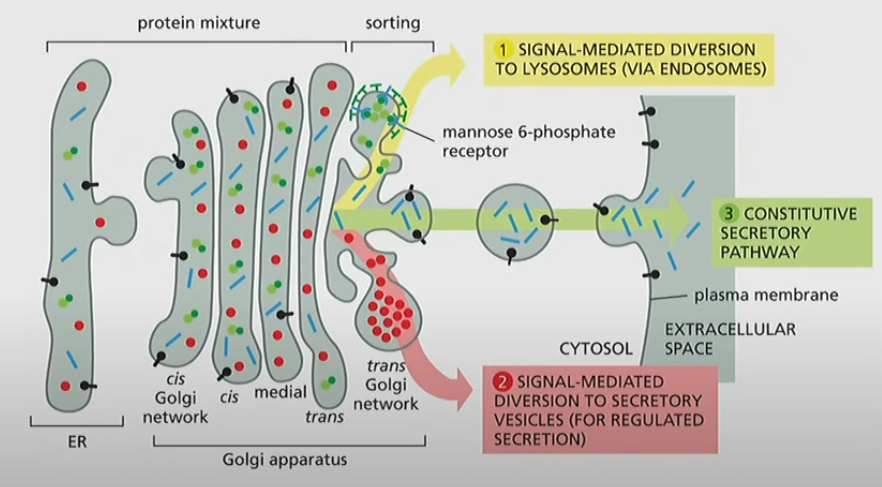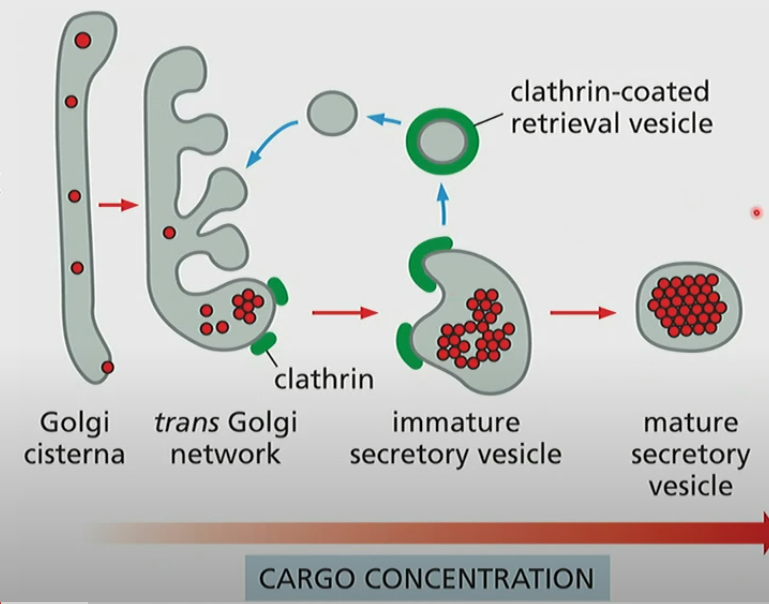-
What are polarized cells and what can they do?
They are different at either end. They can have different functions at different ends, define inside and outside and also transmit signals from one end to the other
-
Two ways that membrane trafficking can send different proteins to different domains
1. Exocytosis directly to target domain
2. Exocytosis to any domain, then endocytosis followed by recycling to target domain
-
What is constitutive secretion?

Default pathway where most cargo move, specific signals are not required once in the ER. Membrane is added to cell membrane once it fuses
-
How do cells reduce membrane usage?

Concentrate cargo in secretory vesicles. Extra membrane when it leaves the trans Golgi network is taken off by clathrin coated vesicles
-
What is regulated secretion vesicles?
Are fully formed vesicles but do not fuse with plasma membrane until a signal is received
-
What do cytokinesis, phagocytosis and plasma membrane repair all have in common?
They use regulated secretion to deliver extra membrane material

